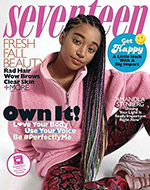 |
Seventeen is the latest publication to be impacted by Hearst’s new “digital-first” strategy. The magazine had already been cut from a monthly to six print issues per year. It will now publish an unspecified number of issues per year, “pegged to news events and key moments in readers’ lives.” The only confirmed issue for 2019 is one centered around prom season. “Our focus will be on the brand’s two-plus million unique visitors and more than 12 million followers across social media,” a Hearst spokeswoman told WWD. Seventeen has seen its readership fall significantly across most channels. Print and web readership are down 15 percent and 23 percent year-to-date according to figures from the MPA. While its mobile web viewership is up 10 percent, video viewership, which is on the rise at many publications, is down 42 percent.
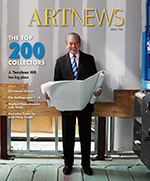 |
Art Media Holdings, the owner of ARTnews, Art in America, ANTIQUES and MODERN Magazine, has been acquired by Penske Media Corporation. Penske’s stable of print and digital properties already includes Rolling Stone, Variety, WWD, Deadline and IndieWire. The financial terms of the deal were not disclosed. A statement from Penske says that the acquisition of the Art Media Holdings titles will open up opportunities for the company to create a data and analytics business and a B2B events business as well as augmenting its digital strategy. ARTnews has been published since 1902, and Art in America was founded in 1913. With the addition of the new brands, Penske says it will become the largest employer of art journalists in the world.
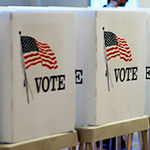 |
The biggest winner in the midterm elections was the advertising industry. Kantar Media reports that $5.25 billion was spent on political ads during the recent election cycle, an increase of 78 percent over the 2014 midterms, and a jump of 20 percent over the amount spent on the 2016 presidential election. Local broadcast TV took in $3.1 billion and local cable accounted for $1.2 billion of the total. Digital ads came in third at $950 million, but that figure represents a 46 percent jump from 2016 and is almost four times as much as 2014’s $250 million. Democrats spent a little more than Republicans (53 percent vs. 46 percent). Healthcare was the big focus of Democrat-funded advertising, while tax reform, immigration and record levels of employment dominated on the Republican side.


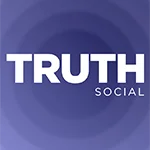 Trump Media & Technology Group today reported a $58.2M net loss on $4.1M in 2023 revenues, a disclosure that drove its stock price down 22.6 percent to $47.96.
Trump Media & Technology Group today reported a $58.2M net loss on $4.1M in 2023 revenues, a disclosure that drove its stock price down 22.6 percent to $47.96. Barry Pollack, an attorney at Wall Street’s Harris St. Laurent & Wechsler, has registered Julian Assange as a client with the Justice Dept. “out of an abundance of caution.”
Barry Pollack, an attorney at Wall Street’s Harris St. Laurent & Wechsler, has registered Julian Assange as a client with the Justice Dept. “out of an abundance of caution.”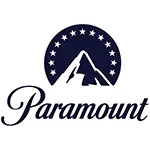 Paramount Global to slash 800 jobs in what chief executive Bob Bakish calls part of an effort to “return the company to earnings growth"... Rolling Stone editor-in-chief Noah Shachtman is exiting at the end of the month due to disagreements with chief executive Gus Wenner over the direction the magazine is taking... The New York Times broke the $1 billion barrier in annual revenue from digital subscriptions in 2023... Press Forward is investing more than $500 million to strengthen local newsrooms.
Paramount Global to slash 800 jobs in what chief executive Bob Bakish calls part of an effort to “return the company to earnings growth"... Rolling Stone editor-in-chief Noah Shachtman is exiting at the end of the month due to disagreements with chief executive Gus Wenner over the direction the magazine is taking... The New York Times broke the $1 billion barrier in annual revenue from digital subscriptions in 2023... Press Forward is investing more than $500 million to strengthen local newsrooms.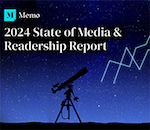 The majority of news articles are read within the first three days of publication, according to a recent report.
The majority of news articles are read within the first three days of publication, according to a recent report.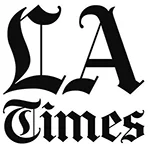 The Los Angeles Times gives pink slips to 115 people or 20 percent of its newsroom staff... TIME is also laying off about 30 employees, which is approximately 15 percent of its editorial staff... The Baltimore Banner, which was launched by Stewart Bainum in 2022 after he failed to buy the Baltimore Sun, added 500 subscribers per day in the three days following Sinclair Broadcast Group's deal to purchase the Sun.
The Los Angeles Times gives pink slips to 115 people or 20 percent of its newsroom staff... TIME is also laying off about 30 employees, which is approximately 15 percent of its editorial staff... The Baltimore Banner, which was launched by Stewart Bainum in 2022 after he failed to buy the Baltimore Sun, added 500 subscribers per day in the three days following Sinclair Broadcast Group's deal to purchase the Sun.


 Have a comment? Send it to
Have a comment? Send it to 
No comments have been submitted for this story yet.